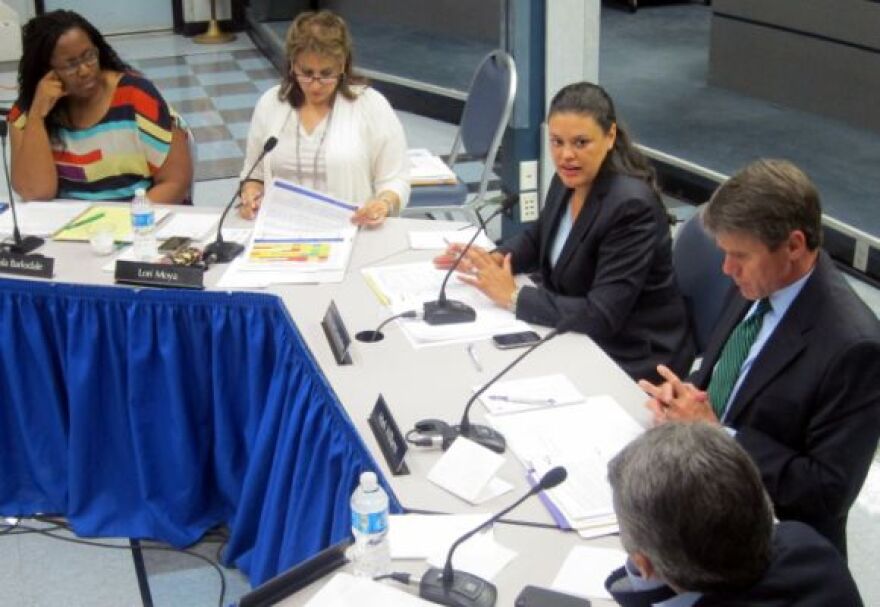http://kut.org/wp-content/uploads/2012/08/NBAISD081412.mp3
The Austin school district is racking its brain trying to come up with a way to help turn around two middle schools repeatedly ranked “academically unacceptable” by the state. The latest plan for Pearce and Garcia Middle Schools involves converting them to single-sex campuses, but that proposal has not received resounding support from the public. That uncertainty surfaced last night among members of the Austin school board.
Pearce and Garcia Middle schools are each about two-thirds Hispanic and one-third African-American, give or take. Both student populations are almost all economically disadvantaged, as measured by the number of students on the National School Lunch Program.
Year after year, both schools have wound up on the state's list of academically unacceptable campuses. And year after year, school board trustees proclaim the need to do something about it.
“Sitting on this side of the fence, it just seems that we've got to do something different for that community, and if we don't, failing those students is not an option,” Trustee Lori Moya said during a work session Monday night.
But what should they do? AISD Superintendent Meria Carstarphen admits they've tried a lot over the past few years.
"We've had plans we've sent to the state. We've had plans we've approved for Pearce and Garcia, and the outcomes have not been great,” Carstarphen said.
Now the new big idea is single-sex schools: combine the two schools into one attendance zone and send all the girls to one campus and all the boys to another. The proposal is based on some research and the notion that girls and boys -- especially at the middle school age -- will learn better when they are apart.
Cheryl Bradley is the school board member most in favor of the program and she represents the northeast Austin neighborhood where it would take place.
"What a boy's going to have to understand about being a man, that's not going to be something a girl's going to be interested in. But then our girls are going to have to learn something too, that they are wonderful creatures,” Bradley said to her colleagues on the board.
But some single-sex school opponents say those kinds of attitudes are borne of the exact same gender stereotypes that single-sex schools tend to reinforce. Rebecca Bigler is a research scientist at the University of Texas at Austin and published a study last year called The Pseudoscience of Single Sex Schooling.
“In many places in the country, this has resulted in for example classrooms for girls that are painted pink and the girls hold hands and they don’t compete and they read Romeo and Juliet instead of Huck Finn,” Bigler said. “Neuroscientists say there are no differences in boys and girls brains that relate to classroom learning.”
But Austin ISD has its own examples that suggest the idea does work. Last night, board members heard from former Overton Elementary School principal Gilbert Hicks. When he was at the school, some of his fifth grade classes were single-sex.
“Less distractions in the classroom, that was what I kept hearing more and more often,” Overton said, “because the girls were able to build rapport with one another and have better peer interactions and the same thing happened with the boys.”
Still, the research shows mixed outcomes, which leads to unanswered questions, questions that school board president Mark Williams said last night the district must to a better job answering before it can proceed.
“I think we have to make the case that why is this model better than a co-ed model, a separate classroom model, you know, any other program,” Williams said.
But Superintendent Carstarphen wants the single-sex program in place by the 2013-14 school year. Sticking to that timeline means she’ll need approval from the board by the end of year.




